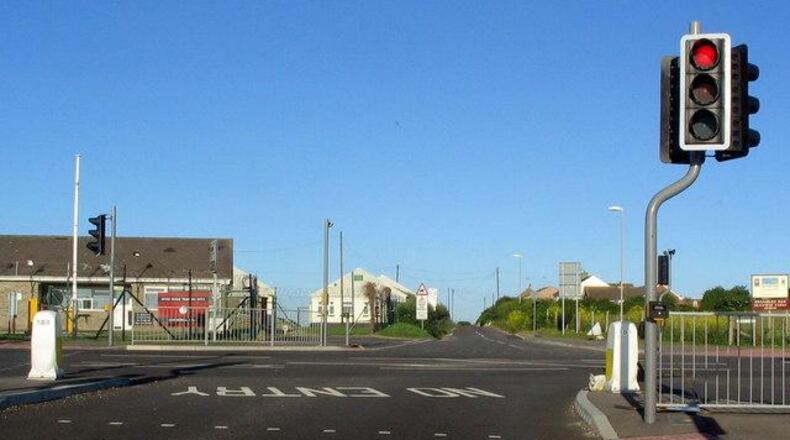State officials Tuesday showed off some of the high-tech wizardry that’s making it easier to drive in metro Atlanta traffic — and announced more of that technology is on the way.
Metro Atlanta already has 400 “smart” traffic signals that talk to cars and power apps designed to make driving safer and faster. And the region will soon get an additional 1,000, Gov. Brian Kemp announced at the Georgia Department of Transportation’s Transportation Tech Showcase in downtown Atlanta.
The smart traffic signals are just one of the technologies that GDOT is counting on to address traffic congestion. From apps that alert drivers when lights are about to turn green to software that detects crashes, the agency says it is turning to technology — rather than just road building — to address metro Atlanta's world-class traffic mess.
“We want to continue to be a national leader in transportation innovation,” Kemp told dozens of vendors and state officials who gathered at the Georgia Freight Depot.
Road building has not gone out of fashion. Georgia has launched an $11 billion plan to address traffic, including metro Atlanta projects such as toll lanes on Ga. 400 and the top half of the Perimeter, and new I-285 interchanges at I-20 east and west of Atlanta.
State lawmakers also have cleared the way for transit expansion in 13 metro counties. Expansions are coming to Atlanta and Clayton County, and DeKalb, Fulton and Gwinnett counties may not be far behind.
But GDOT also is counting on new technology to help ease traffic. Some of that technology was on display Tuesday.
One example: GDOT has installed some 8,000 “smart” traffic signals across the state. They share data — for example, when a light will turn green — that private companies use to create traffic apps.
GDOT plans to spend about $10 million this year to install additional equipment at some 1,600 intersections that allows stoplights to communicate directly with vehicles. That includes 400 already installed in metro Atlanta.
On Tuesday the governor announced plans to install such technology at some 1,000 more metro Atlanta intersections — bringing the statewide total to 2,600.
That infrastructure will be crucial as the nation embraces autonomous vehicles. But it's already in use on Georgia roads.
The company Applied Information has an app that — among other things — alerts drivers when a light is about to turn green. That can cut down on delays by alerting drivers when it's time to look up from their cellphones (which they shouldn't be holding anyway).
“You don’t have to worry about the guy blowing his horn behind you,” said Chris Holloway, the company’s business development manager for the Southeast.
GDOT also has "incident-detection" software that scans highway traffic cameras for crashes and other problems that snarl traffic. The software alerts traffic controllers to monitor the incident or send a highway assistance unit to the scene.
Alan Davis, GDOT’s assistant state traffic engineer, said the software has reduced response times by six to seven minutes. That means incidents are cleared and traffic gets back to normal faster.
A few million dollars for smart traffic signals is nothing compared with the $834 million the agency spent on the Northwest Corridor Express Lanes in Cherokee and Cobb counties.
But it can have an outsize impact on traffic. GDOT says at least half of metro Atlanta’s traffic congestion is caused by accidents.
The technology has captured the imagination of elected officials. On Tuesday, Lt. Gov. Geoff Duncan told the GDOT audience that the solution to traffic problems “is not just about more rebar and taller overpasses.” He wants Georgia to be the technology capital of the East Coast.
“You don’t just call yourself the technology capital,” Duncan said. “You’ve got to earn it.”
About the Author
Keep Reading
The Latest
Featured




